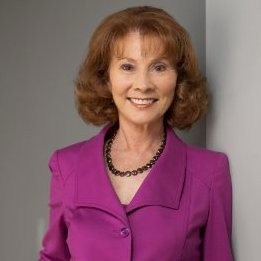
The Engaging Women in Public Service Conference is in T- 14 days and ELGL is psyched to be partnering with the School of Government at UNC to magnify the conference message – supporting women in public service leadership is powerful.
Last week we introduced the conference and this week we asked Carol Kinsey Goman, the keynote speaker, to give us the inside scoop on her leadoff session on effective body language. Fortunately, the engaging woman agreed.
More about Carol Kinsey Goman
 Carol Kinsey Goman is an executive coach and media expert on the impact of body language in the workplace. She is also a Leadership blogger for Forbes and author of “The Silent Language of Leaders: How Body Language Can Help – or Hurt – How You Lead.” She has served as adjunct faculty at John F. Kennedy University in the International MBA program, at the University of California in the Executive Education Department, and for the Chamber of Commerce of the United States at their Institutes for Organization Management. Carol’s clients include over 200 organizations in 25 countries.
Carol Kinsey Goman is an executive coach and media expert on the impact of body language in the workplace. She is also a Leadership blogger for Forbes and author of “The Silent Language of Leaders: How Body Language Can Help – or Hurt – How You Lead.” She has served as adjunct faculty at John F. Kennedy University in the International MBA program, at the University of California in the Executive Education Department, and for the Chamber of Commerce of the United States at their Institutes for Organization Management. Carol’s clients include over 200 organizations in 25 countries.
She is a frequent speaker for The Conference Board and has been featured at The Executive Forum and the CEO Roundtable. She is the author of 12 books, including “The Silent Language of Leaders: How Body Language Can Help or Hurt How You Lead.” Carol is a current faculty member for the Institute for Management Studies. She’s been a therapist in private practice, a nightclub entertainer, and a majorette for the 49er football team — but not in that order.
So…what’s so important about body language?
Body language is the management of time, space, appearance, posture, gesture, touch, expression, eye contact, and vocal prosody. Body language is a crucial to management, collaboration, negotiation, sales, and working across cultures. It is a huge part of that elusive quality called “leadership presence.”

There are two sets of nonverbal signals that are especially important to all leaders. When first introduced to a leader, followers immediately and unconsciously assess her for warmth (empathy, likeability, caring) and authority (power, credibility, status). “Warm” leaders connect with staff in a way that makes them want to do a really good job because of that personal connection, affection, and respect. But employees also look for leaders who project stability and authority, who make them feel secure, and whom they believe can follow through and achieve results.
Obviously the most appealing leaders are seen to encompass both qualities, and the least effective leaders are those regarded as uncaring and insecure. Perhaps not so obviously, many of the nonverbal signals for warmth and authority are divided along gender lines. Although leaders of both sexes who do not fit the stereotypes, I’ve also gender differences in body language most often align do align with these two groupings. Women are the champions in the warmth and empathy arena, but lose out with power and authority cues.
Attending the session? Here is what you can expect
- 10 nonverbal ways women give away their power – and how to regain it!
- Why a certain kind of eye contact can get you into trouble.
- A two-minute technique for “faking” confidence and charisma.
- How coupling a single touch with a single word can make you unforgettable.
- What people are telling you without saying a word: How to read other people’s bodies from head to toe

Join us!
Sign up for the Engaging Women in Public Service Conference on June 5.
Follow the session with ELGL on Twitter!
Have a question to ask Carol Kinsey Goman or one of the other session leaders? Join our Twittersation on June 3rd at 1pm (est.) using the hashtag #13percent
